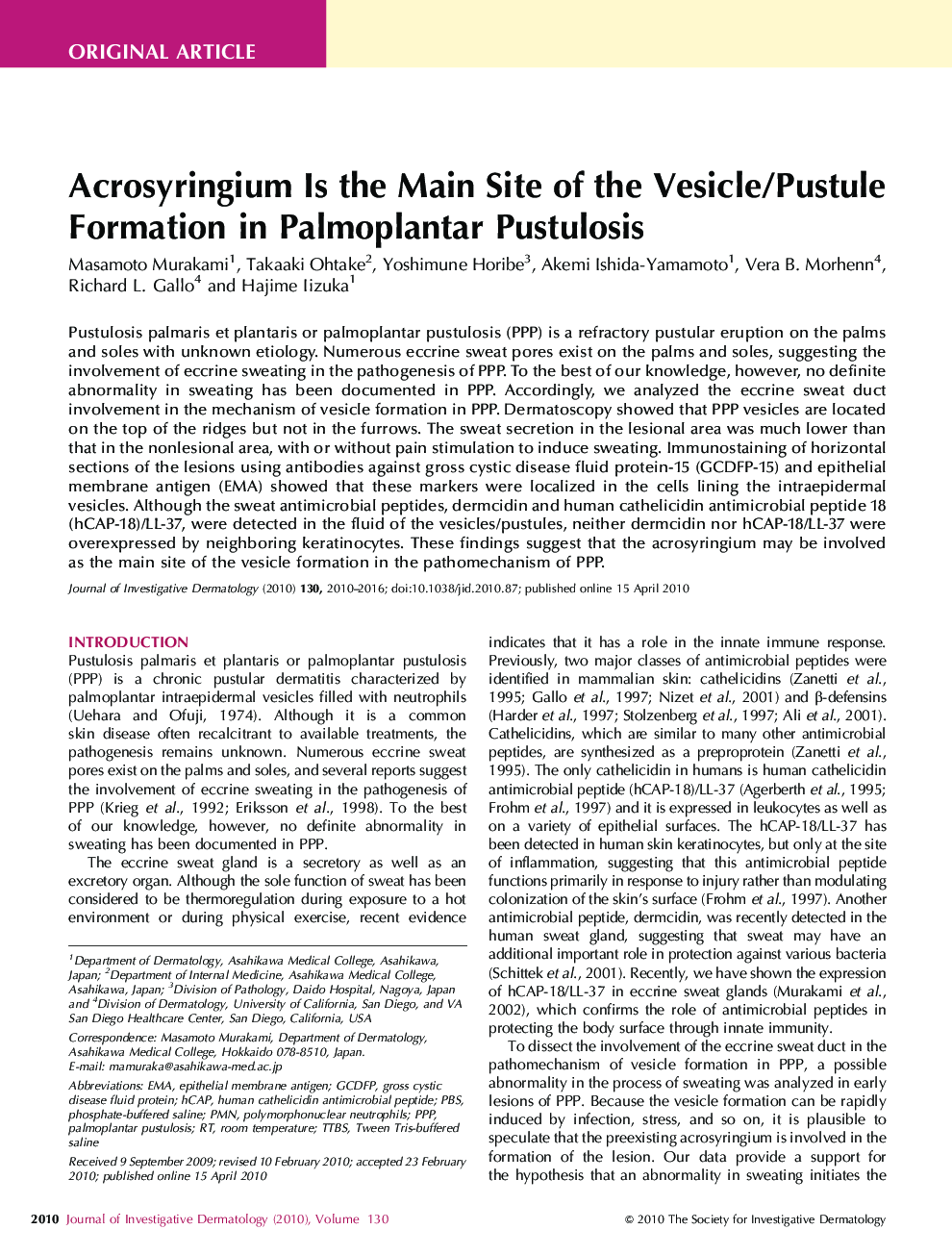| Article ID | Journal | Published Year | Pages | File Type |
|---|---|---|---|---|
| 3216956 | Journal of Investigative Dermatology | 2016 | 7 Pages |
Pustulosis palmaris et plantaris or palmoplantar pustulosis (PPP) is a refractory pustular eruption on the palms and soles with unknown etiology. Numerous eccrine sweat pores exist on the palms and soles, suggesting the involvement of eccrine sweating in the pathogenesis of PPP. To the best of our knowledge, however, no definite abnormality in sweating has been documented in PPP. Accordingly, we analyzed the eccrine sweat duct involvement in the mechanism of vesicle formation in PPP. Dermatoscopy showed that PPP vesicles are located on the top of the ridges but not in the furrows. The sweat secretion in the lesional area was much lower than that in the nonlesional area, with or without pain stimulation to induce sweating. Immunostaining of horizontal sections of the lesions using antibodies against gross cystic disease fluid protein-15 (GCDFP-15) and epithelial membrane antigen (EMA) showed that these markers were localized in the cells lining the intraepidermal vesicles. Although the sweat antimicrobial peptides, dermcidin and human cathelicidin antimicrobial peptide 18 (hCAP-18)/LL-37, were detected in the fluid of the vesicles/pustules, neither dermcidin nor hCAP-18/LL-37 were overexpressed by neighboring keratinocytes. These findings suggest that the acrosyringium may be involved as the main site of the vesicle formation in the pathomechanism of PPP.
